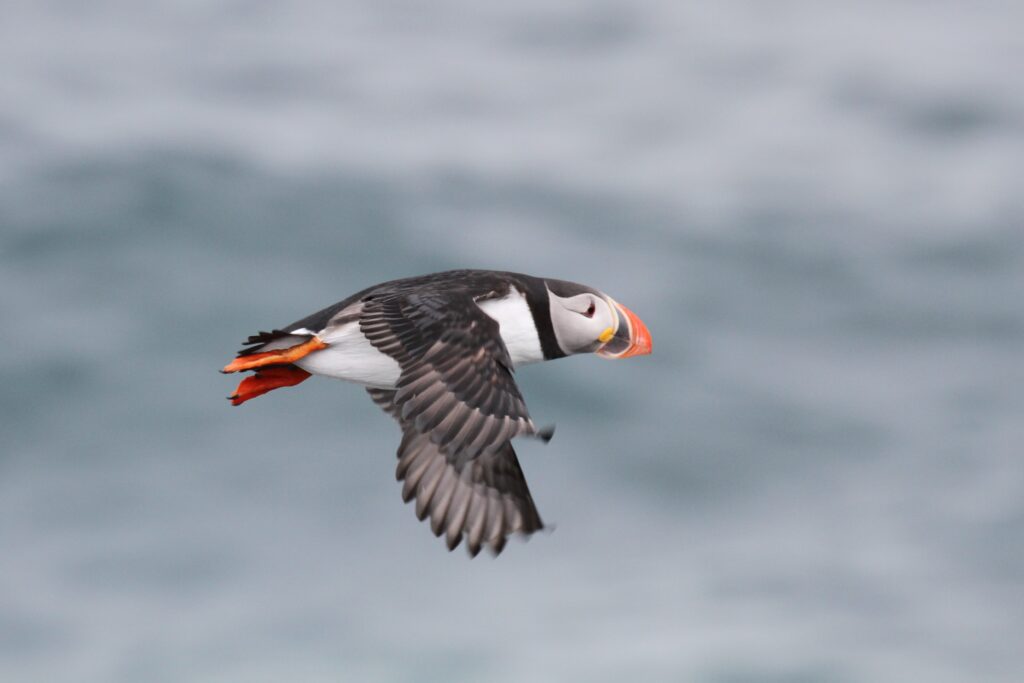Increase in extreme weather may be ominous for puffins
Using long-term data series and modern tracking technology, researchers have studied how increased events of extreme weather affect adult survival among Atlantic puffins in five colonies in the Northeast Atlantic.
More extreme winter conditions
While seabirds are undergoing drastic declines globally, their habit of spending the non-breeding season at sea makes it challenging to study the drivers of their survival. Harsh weather and changes in climate conditions can have large impacts on seabird population dynamics through increased mortality. The intensity and persistence of extreme events are forecasted to increase with global warming. As shared conditions can induce population synchrony, multi-population studies of key demographic parameters are imperative to explore the influence of climate change.
Mark-recapture combined with GLS tracking
We used long-term mark-recapture data and position data from geolocating light sensors (GLS) to determine non-breeding stop-over areas of five Atlantic puffin (Fratercula arctica) populations over a latitudinal gradient in the Northeast Atlantic (56°11’-70°23’N). We investigated synchrony in adult survival in relation to shared stop-over areas. We quantified effects of extreme extra-tropical cyclones (ETCs) specific to populations’ stop-over areas and the North Atlantic Oscillation on adult survival.
Storms may affect winter survival
Populations with overlapping stop-over areas exhibited temporal synchrony in survival rates. Winter ETCs negatively influenced survival in one population, which was the one most exposed to extreme weather, but did not directly influence adult survival in the other four populations. Synchrony among populations with shared stop-over areas highlights the importance of these areas for adult survival, a key life-history rate. However, extreme weather was not identified as a driving factor for most of the study populations. This suggests other factors in these areas, likely related to bottom-up trophic interactions, as environmental drivers of synchrony in the survival of Atlantic puffins.
Read the article:

Photo © Erlend Lorentzen

Photo © Ola Nordsteien
Contact person: Tone Kristin Reiertsen, NINA
